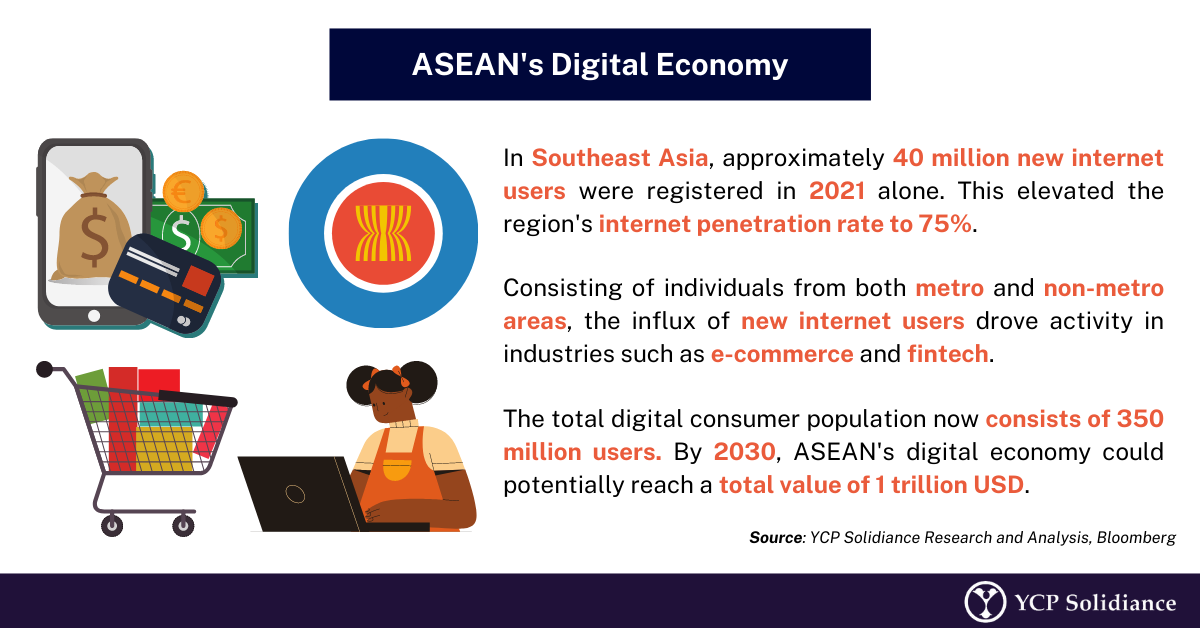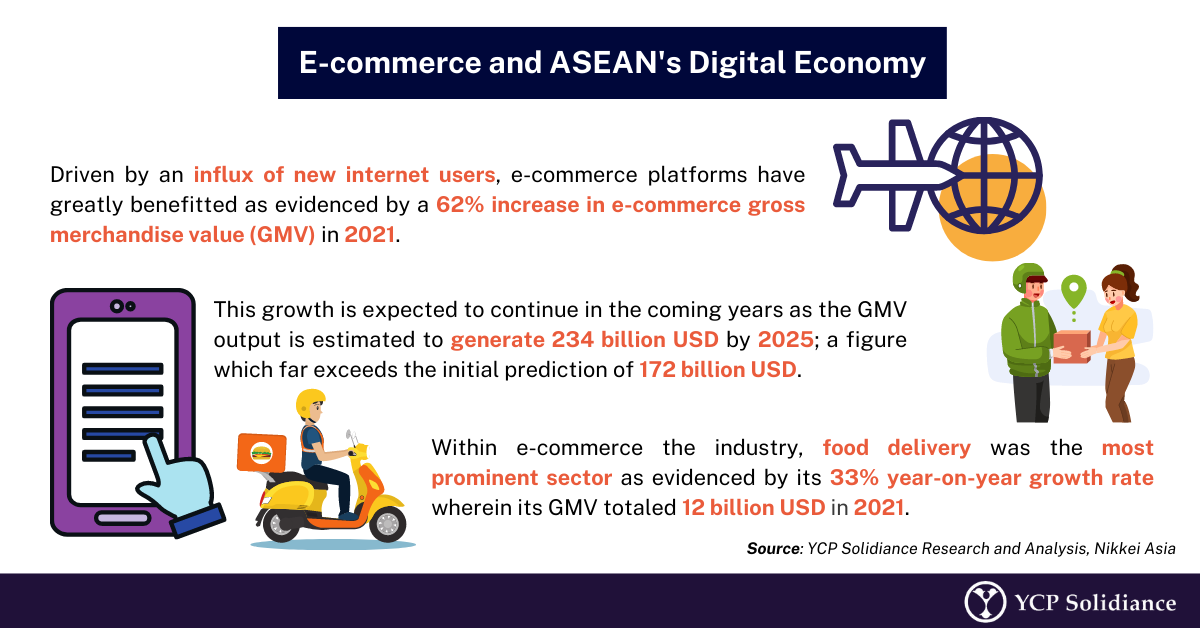Despite the setbacks presented by the COVID-19 global pandemic, recent data reveals that sectors driven by digitalization have managed to continue growth. Digitalization across Asia, specifically in the Southeast region, has accelerated at a rapid pace due to an influx of new internet users and increased activity of businesses in areas like e-commerce and fintech.
In context of the future of the digital economy within the region, statistics indicate continued, positive development over a prolonged period that will have a significant impact on other sectors as well. According to an article by Nikkei Asia, member-countries of the Association of Southeast Asian Nations’ (ASEAN) digital economy are forecasted to reach a total value of 1 trillion USD by 2030. This is further spurred on by the current internet penetration rate within ASEAN being at a high 75%, leading to an increase of total digital consumer population to 350 million users.

A Burgeoning E-Commerce Landscape
A large majority of the digital economy’s growth in ASEAN has taken place due to several factors, the most prominent being the increased online spending of users on e-commerce platforms.
As per market research from Google, Southeast Asia is set to experience a 62% increase in e-commerce gross merchandise value (GMV) by the end of the 2021 calendar year. This increase is predicted to generate approximately 234 billion USD by 2025, which eclipses the previous estimate of 172 billion USD. While the Southeast Asian market is dominated by unicorns like Grab and e-commerce giants such as Shopee and Lazada, the rate at which the industry is growing is encouraging for all possible stakeholders involved as it presents a plethora of opportunities.
For example, regardless of a platform’s industry position, e-commerce companies will need a steady flow of new vendors to provide products to sustain growth, thus creating a significant entry point for new players and SMEs as producers. Other businesses in closely related industries like logistics will also benefit from e-commerce’s success as there is demand for services such as same-day and long-distance deliveries.

ASEAN Initiatives
In line with ASEAN’s long-term commitment to growing its digital economy, the association has implemented several initiatives to accelerate growth. One such measure is the creation of the ASEAN Digital Economy Framework Agreement (DEFA) by 2025 wherein recovery from the pandemic, improvement of digital infrastructure, and promotion of the digital economy’s overall growth are emphasized. Once fully completed, DEFA will serve as a comprehensive guide that ASEAN member-countries can refer to when developing initiatives related to the digital ecosystem.
Beyond the association itself, private organizations are also taking the initiative to create programs that help the development of the ASEAN region’s digital economy. For instance, in collaboration with the ASEAN Coordinating Committee on Micro, Small, and Medium Enterprises (ACCMSME), the Asia Foundation established the Go Digital ASEAN initiative to equip micro and small enterprises with the necessary skills to thrive in a digital set-up. The regional project expects to train approximately 200,000 individuals.
As ASEAN continues to develop and implement initiatives geared toward digital growth, the outlook of the region’s digital economy is promising. Moving forward, expect ASEAN member countries to bank on the success of its digital economies to drive overall growth and innovation.
For more updates on the development of digital economies within ASEAN, subscribe to our newsletter here.






